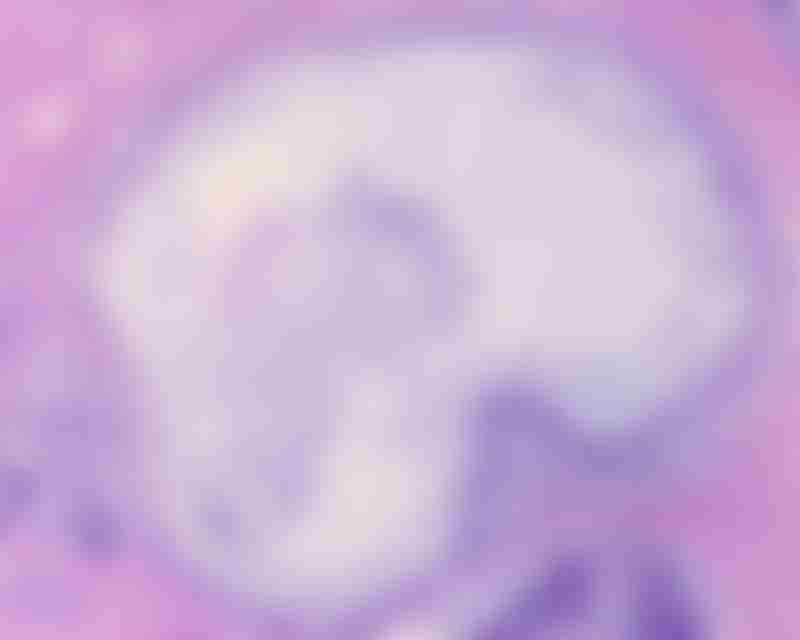Duct Ectasia: Can It Lead to Breast Cancer?

Duct ectasia of the breast. Light micrograph of a very dilated large lactiferous (milk) duct with foamy macrophages filling the lumen. Source: Science Photo Library
Duct ectasia, also known as mammary duct ectasia or benign mammary ductal ectasia, is a benign (non-cancerous) condition that affects the milk ducts in the breast. Duct ectasia occurs when the milk ducts beneath the nipple and areola become widened, accompanied by thickening of their walls and occasional filling with a thick, sticky fluid. It typically occurs in women who are approaching menopause or are postmenopausal, although it can also affect women of other ages.
The exact cause of duct ectasia is not always clear, but it may be related to changes in the breast tissue due to aging and hormonal fluctuations. Smoking has been associated with an increased risk of duct ectasia.
Symptoms and signs of duct ectasia
In many cases, duct ectasia does not cause any symptoms. However, some women with duct ectasia may experience one or more of these clinical signs:
- Nipple discharge, which is often sticky and thick
- Red and tender nipple and surrounding breast tissue
- Inverted nipple (nipple pulled inward)
- Thickening near the affected duct(s), which may feel like a hard lump
- Fever from bacterial infections caused by blocked ducts
These symptoms may be similar to other cancerous breast conditions, such as ductal carcinoma in-situ, as well as non-cancerous breast conditions, like periductal mastitis. It is best to consult healthcare professionals if you notice any of these symptoms as they can provide a proper and accurate diagnosis.
How is duct ectasia diagnosed?
Duct ectasia is often diagnosed through clinical examination and imaging studies, such as a mammography or breast ultrasound. Ductography (also called a galactography) may also be performed in some cases to visualize the affected ducts.
Does duct ectasia require treatment?
In many cases, duct ectasia does not require treatment, especially if it is not causing bothersome symptoms. If symptoms are present, treatment options may include warm compresses, over-the-counter pain relievers such as ibuprofen, and antibiotics if an infection is suspected.
In cases with persistent and recurrent symptoms and swelling, surgical removal of the affected duct (microdochectomy) may be considered. For cases with recurrent periductal mastitis associated with ductal ectasia, more extensive measures may be taken such as major mammary duct excision to remove all lactiferous (milk) ducts under the nipple.
Does duct ectasia increase my breast cancer risk?
Fortunately, duct ectasia is a benign condition and is not a precursor to breast cancer. However, the symptoms of duct ectasia, such as nipple discharge, can sometimes mimic those of more serious conditions, so it's important to have any breast changes evaluated by a healthcare provider. Early detection and treatment can significantly improve the chances of a successful outcome.
What I should do if I have duct ectasia
Overall, duct ectasia is a benign and usually manageable condition. If you have symptoms or concerns about your breast health, it's advisable to seek medical evaluation and guidance from a healthcare professional, such as a breast specialist. By staying informed and being aware of changes in your breast, you can actively contribute to your overall well-being and tackle any issues as early as possible.